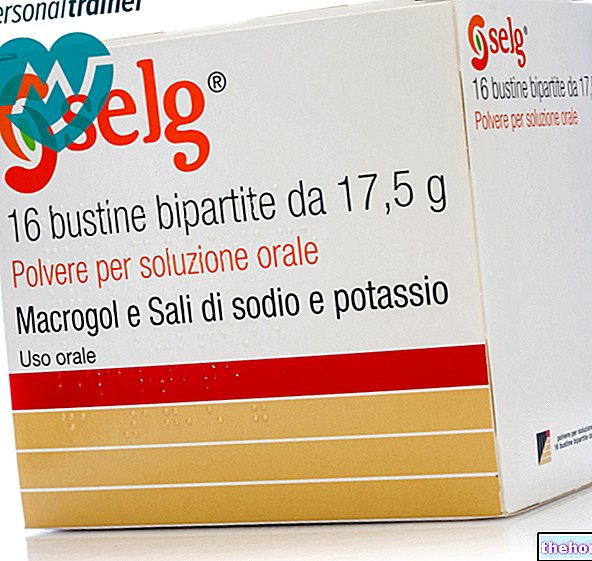Active ingredients: Alfacalcidol
DERIL 1.0 mcg Capsules
Why is Deril used? What is it for?
Vitamin: Alfacalcidol, metabolite of Vitamin D.
Renal insufficiency osteodystrophy on dialysis or not. Hypoparathyroidism. D-resistant or D-dependent (pseudo-deficient) rickets and osteomalacia.Rickets and osteomalacia due to renal alterations due to the metabolism of vitamin D. Postmenopausal osteoporosis.
Contraindications When Deril should not be used
States of hypercalcemia. The product should not be administered during pregnancy and lactation. Individual hypersensitivity to vitamin D or other components of the product.
Precautions for use What you need to know before you take Deril
Since the overdosing of DERIL can cause hypercalcemia and in some cases hypercalciuria, the calcium should be dosed at least twice a week in the dosage adjustment phase. Once the optimal daily dose has been established, a monthly control of the calcium level is sufficient. of alkaline phosphatase generally anticipates the onset of hypercalcemia and can therefore be a premonitory symptom of the latter.
If hypercalcaemia occurs, the drug and any calcium supplement should be temporarily interrupted until the calcemia is generally rapidly renormalized. Treatment can then be resumed at a lower dose.
DERIL should be administered with caution in patients undergoing digitalis treatment, as hypecalcemia may aggravate cardiac arrhythmia in such patients. Since DERIL influences the transport of phosphates in the intestine, kidney and bone, the concomitant administration of phosphor-fixing substances must be adapted to the values of phosphatemia (normal rates: 2-5 mg / 100 ml).
Pregnancy and breastfeeding
The product should not be administered during pregnancy and breastfeeding.
Interactions Which drugs or foods can modify the effect of Deril
The simultaneous use of anticonvulsants with enzymatic induction properties (barbiturates, diphenylhydantoin) can cause a lower response to Alfacalcidol with the need to increase the dosage. Excessive use of preparations containing aluminum can also interfere with the efficacy of the drug. Animal studies have suggested a possible potentiation of the action of warfarin when administered with calciferol. Although there is no similar evidence with the use of Alfacalcidol, caution should be exercised when the two drugs are used simultaneously. Drugs containing magnesium should not be used. be administered during the treatment with DERIL in order to avoid the onset of hypermagnesaemia.Colestyramine can reduce the intestinal absorption of fat-soluble vitamins and therefore also of DERIL.
Warnings It is important to know that:
Since Alfacalcidol is the precursor of the active metabolite of vitamin D3, vitamin D, as well as its derivatives, should not be administered during the treatment with DERIL. Overdosing of any form of vitamin D causes even serious manifestations. Hypercalcemia caused by an excess dose of vitamin D or its metabolites may also require emergency therapy. Hypercalcemia, if chronic, could in fact cause generalized vascular calcifications, nephrocalcinosis and calcifications of other soft tissues. It is therefore necessary to ensure that the figure obtained by multiplying the value of calcium by that of phosphatemia (Ca x P) does not exceed 70.
The radiographic examination of the anatomical regions, sites of possible calcifications, can be useful for an early diagnosis. DERIL has no effect on the use of machines and on the ability to drive.
Dosage and method of use How to use Deril: Dosage
Initial dosage suggested for all indications: Adults and children over 20 kg of body weight: 1 mcg per day Children under 20 kg of body weight: 0.05 mcg / kg / day. Subsequently the dose can be adjusted according to the response.
Overdose What to do if you have taken too much Deril
In case of severe hypercalcemia due to accidental overdose, after temporarily discontinuing the drug, diuretics can be administered, together with intravenous fluids or corticosteroids.
Side Effects What are the side effects of Deril
If the dosage is in accordance with actual individual needs, DERIL is well tolerated. Otherwise, since the product has a D-vitamin activity, side effects may appear which are similar to those of hypervitaminosis D, ie a hypercalcemic syndrome or toxic manifestations of calcium (depending on the severity and duration of the hypercalcemia). These manifestations are both acute and chronic.
The former include weakness, headache, drowsiness, nausea, vomiting, dry mouth, constipation, bone and muscle pain. Micturition disorders, conjunctivitis (due to calcification), photophobia, pancreatitis, rhinorrhea, pruritus, hyperthermia, decreased libido, albuminuria, hypercholesterolemia, increased SGOT and SGPT, ectopic calcifications, hypertension, cardiac arrhythmias and, rarely, psychosis.
Since the half-life of calcitriol is short, the normalization of any hypercalcemia occurs within a few days of discontinuing treatment with DERIL, however more rapidly than during therapy with vitamin D or its metabolites.
Notify the attending physician or pharmacist of any onset of undesirable effects not described in this leaflet.
Keep away from sources of heat, humidity and light.
Expiry and Retention
Warning: do not use the medicine after the expiry date indicated on the package.
This date refers to the product in intact packaging, properly stored.
Other Information
COMPOSITION
Each capsule contains:
Active ingredient: Alfacalcidol (1 α-Hydroxy Vitamin D3) 1.0 mcg
Excipients:
Covi-ox T70 (E306), Fractionated coconut oil, Gelatin, Glycerol, Purified water, Titanium dioxide (E171), Iron oxide (E172) PHARMACEUTICAL FORM AND PACKAGING DERIL 1.0 - 30 capsules of 1.0 mcg.
Source Package Leaflet: AIFA (Italian Medicines Agency). Content published in January 2016. The information present may not be up-to-date.
To have access to the most up-to-date version, it is advisable to access the AIFA (Italian Medicines Agency) website. Disclaimer and useful information.
01.0 NAME OF THE MEDICINAL PRODUCT
DERIL 1.0 MCG CAPSULES
02.0 QUALITATIVE AND QUANTITATIVE COMPOSITION
Each capsule contains: Alfacalcidol (1? -Hydroxy vitamin D3) 1.0 mcg.
03.0 PHARMACEUTICAL FORM
Capsules for oral use.
04.0 CLINICAL INFORMATION
04.1 Therapeutic indications
Renal insufficiency osteodystrophy on dialysis or not. Hypoparathyroidism. D-resistant or D-dependent (pseudo-deficient) rickets and osteomalacia. Rickets and osteomalacia due to renal alterations due to the metabolism of vitamin D. Postmenopausal osteoporosis.
04.2 Posology and method of administration
Suggested starting dosage for all indications:
Adults and children over 20 kg of body weight: 1 mcg per day.
Children under 20 kg of body weight: 0.05 mcg / kg / day. Subsequently the dose can be adjusted according to the response.
04.3 Contraindications
States of hypercalcemia. The product should not be administered during pregnancy and lactation. Individual hypersensitivity to vitamin D or other components of the product.
04.4 Special warnings and appropriate precautions for use
Since the overdosing of DERIL can cause hypercalcemia and in some cases hypercalciuria, the calcium should be dosed at least twice a week in the dosage adjustment phase. Once the optimal daily dose has been established, a monthly control of the calcium level is sufficient. of alkaline phosphatase generally anticipates the onset of hypercalcemia and can therefore be a premonitory symptom of the latter. If hypercalcemia occurs, the drug and any calcium supplement must be temporarily interrupted until the generally rapid normalization of the calcium . Treatment can then be resumed at a lower dose.
DERIL should be administered with caution in patients undergoing digitalis treatment, as hypercalcemia may aggravate cardiac arrhythmia in such patients. Since DERIL influences the transport of phosphates in the intestine, kidney and bone, the concomitant administration of phosphor-fixing substances must be adapted to the values of phosphatemia (normal rates: 2-5 mg / 100 ml).
Since Alfacalcidol is the precursor of the active metabolite of vitamin D3, vitamin D, as well as its derivatives, should not be administered during treatment with DERIL. Overdosing of any form of vitamin D causes even serious manifestations.
Hypercalcemia caused by an excess dose of vitamin D or its metabolites may also require emergency therapy. "Hypercalcemia, if chronic, could in fact cause generalized vascular calcifications, nephrocalcinosis and calcifications of other soft tissues. It is therefore necessary to ensure that the figure obtained by multiplying the value of calcium by that of phosphate (Ca x P) does not exceed 70. L" radiographic examination of the anatomical regions, site of possible calcifications, can be useful for an early diagnosis.
Keep out of the reach of children.
04.5 Interactions with other medicinal products and other forms of interaction
The simultaneous use of anticonvulsants with enzymatic induction properties (barbiturates, diphenylhydantoin) can cause a lower response to Alfacalcidol with the need to increase the dosage. Excessive use of preparations containing aluminum can also interfere with the efficacy of the drug. Animal studies have suggested a possible potentiation of the action of warfarin when administered with calciferol. Although there is no similar evidence with the use of Alfacalcidol, caution should be exercised when the two drugs are used simultaneously. Drugs containing magnesium should not be used. be administered during treatment with DERIL to avoid the onset of hypermagnesaemia.
Cholestyramine can reduce intestinal absorption of fat-soluble vitamins and therefore also DERIL.
04.6 Pregnancy and breastfeeding
The product should not be administered during pregnancy and breastfeeding.
04.7 Effects on ability to drive and use machines
None known.
04.8 Undesirable effects
If the dosage is in accordance with actual individual needs, DERIL is well tolerated. Otherwise, since the product has a D-vitamin activity, side effects may appear which are similar to those of hypervitaminosis D, ie a hypercalcemic syndrome or toxic manifestations of calcium (depending on the severity and duration of the hypercalcemia). These manifestations are both acute and chronic.
The former include weakness, headache, drowsiness, nausea, vomiting, dry mouth, constipation, bone and muscle pain. Micturition disorders, conjunctivitis (due to calcification), photophobia, pancreatitis, rhinorrhea, pruritus, hyperthermia, decreased libido, albuminuria, hypercholesterolemia, increased SGOT and SGPT, ectopic calcifications, hypertension, cardiac arrhythmias and, rarely, psychosis.
Since the half-life of calcitriol is short, the normalization of any hypercalcemia occurs within a few days of discontinuing treatment with DERIL, however more rapidly than during therapy with vitamin D or its metabolites.
04.9 Overdose
In case of severe hypercalcaemia due to accidental overdose, after temporarily discontinuing the drug, diuretics can be administered, together with intravenous fluids or corticosteroids.
05.0 PHARMACOLOGICAL PROPERTIES
05.1 Pharmacodynamic properties
l "1? -hydroxycholecalciferol (1? -OH D3) is a product obtained by synthesis, and is readily converted in the liver to 1,25- (OH) 2D3, which represents the active metabolite through which vitamin D exerts its effect on phosphocalcic homeostasis.
In the organism the metabolism of vitamin D is characterized by a first hydroxylation which occurs in the liver with the formation of 25 OHD3 and by a second renal hydroxylation which determines the formation of 1,25- (OH) 2D3. The administration of 1? -Hydroxycholecalciferol therefore allows to evade the metabolic phase at the renal level of the transformation of vitamin D and also to obtain the production of its active metabolite. Its pharmacological and clinical activity is therefore expressed in cases in which the 1? -Renal hydroxylation is absent or decreased both for renal damage and for a lack of extrarenal factors that regulate the conversion of 25 OH D3 to 1,25- (OH) 2D3. Treatment with 1? -OH D3 is characterized by low dosages and by a remarkable rapidity of action with which it determines an increase in intestinal calcium absorption and an increase in the concentration of calcium in the serum. The risks of hypercalcemia are minimized also due to the shortness of the duration of the action of DERIL and of the fact that the conversion of 1? -OH D3 to 1.25 - (OH) 2D3 is regulated with a feedback mechanism by the dihydroxylated compound itself.
05.2 Pharmacokinetic properties
L "1? -OH D3 (DERIL) has the following pharmacokinetic characteristics: - it is absorbed in the small intestine - it is distributed primarily in the liver and only in a small percentage in the intestinal mucosa - in the liver it is metabolized at 1.25 - (OH) 2D3 is extremely rapidly eliminated in the form of 1,25- (OH) 2D3 with the faeces. The elimination also occurs in part via the urine in the form of a more polar compound than 1? -OH D3.
05.3 Preclinical safety data
Acute toxicity. LD50: in mice, rats and dogs p.o. (males and females): 476-440 mcg / kg; 340-720 mcg / kg:> 500 mcg / kg. LD50: in mice and dogs i.v .: 71-56 mcg / kg; > 200 mcg / kg.
Subacute toxicity. Doses ranging from 0.5 to 50 mcg / kg per day were administered for one month in Wistar rats. Clinical and laboratory parameters were taken into consideration and an autopsy was performed after sacrifice. The main action of 1? -OH D3 (DERIL) took the form of necrosis of the arterioles in the myocardium, gastrointestinal tract and voluntary muscles with degeneration and muscle fibrosis.
Chronic toxicity. The 1? -OH D3 (DERIL) was administered to rats for 6 months at dosages ranging from 0.02 to 2.5 mcg / kg per day. Histological alterations were found in the kidney, heart, aorta, testes, thymus and intestinal mucosa. The main effects were found to be dependent on hypercalcemia. Daily oral administration of 0.02 mcg / kg for 6 months was found to be free from toxicity. The same dose was found to be non-toxic in dogs after repeated administration for one year.
06.0 PHARMACEUTICAL INFORMATION
06.1 Excipients
Covi-ox T70 (E306), fractionated coconut oil, gelatin, glycerol, purified water, titanium dioxide (E171), iron oxide (E172).
06.2 Incompatibility
None known.
06.3 Period of validity
In intact packaging, 24 months.
06.4 Special precautions for storage
Store away from light, humidity and heat sources.
06.5 Nature of the immediate packaging and contents of the package
DERIL 1.0 mcg capsules: boxes of 30 capsules.
06.6 Instructions for use and handling
No special instructions.
Unused product and waste derived from this medicine must be disposed of in accordance with local legal requirements.
07.0 MARKETING AUTHORIZATION HOLDER
I.BIR.N. - National Biotherapy Institute s.r.l.
Via Vittorio Grassi 9/15 - 00155 Rome
08.0 MARKETING AUTHORIZATION NUMBER
DERIL "1.0": A.I.C. n. 032832026
09.0 DATE OF FIRST AUTHORIZATION OR RENEWAL OF THE AUTHORIZATION
JUNE 1999
10.0 DATE OF REVISION OF THE TEXT
JUNE 2009




























